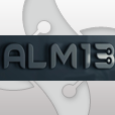Wise Command Line
Does anybody know how to use Wise Studio to build a MSI that launches Regsvr32 "C:\Windows\System32\File.dll ?? Thanks in Advance
Ryan
Ryan
0 Comments
[ + ] Show comments
Answers (13)
Please log in to answer
Posted by:
anonymous_9363
16 years ago
ORIGINAL: tron2oleI can't imagine why you'd want to clean out the class ID stuff, since that is the entire point of importing the .REG! :) I think, perhaps, it might be to do with whether or not you have Wise set to use self-registration (not recommended) or to populate the advertising tables (recommended). You can find an article (is it on Juice, John?) which tells you in great deal why the latter is NOT a good idea but I think it's fair to say that the overwhelming majority of packagers will tell you that it is.
I remember looking at an article on the Altiris website and mentioned how to use the wisecomcapture tool.
But also mentioned to cleanout classIDs etc from the output registry file from the wisecomcapture.
What are the rules and how do you know which entries to remove from the output registry COM information?
In summary:
- set Wise to use the advertising tables
- use WiseComCapture to create .REGs for your registerable DLLs (remembering that some DLLs have the DLLRegisterServer entry-point but no COM information)
- reply 'Yes' when WPS asks if you want to use advertising tables when you import the .REG.
Posted by:
anonymous_9363
16 years ago
In a word, don't. Using RegSvr32 is the work of Satan, as is using the SelfReg table (effectively the same thing).
Do the job properly. Use your MSI authoring tool's utilities to extract the DLL's COM information into a .REG file, import that into your project and, if prompted, elect to use the advertising tables.
The reason behind this is straightforward. RegSvr32 and the SelfReg tables rely on ALL of a DLL's dependencies being present at registration-time, something you probably cannot guarantee. If they're not present, the DLL in question won't register and the installation will fail, unless you set it to ignore errors returned from the registration Custom Action, in which case, why bother registering the DLL at all?
Do the job properly. Use your MSI authoring tool's utilities to extract the DLL's COM information into a .REG file, import that into your project and, if prompted, elect to use the advertising tables.
The reason behind this is straightforward. RegSvr32 and the SelfReg tables rely on ALL of a DLL's dependencies being present at registration-time, something you probably cannot guarantee. If they're not present, the DLL in question won't register and the installation will fail, unless you set it to ignore errors returned from the registration Custom Action, in which case, why bother registering the DLL at all?
Posted by:
aogilmor
16 years ago
ORIGINAL: VBScab
In a word, don't. Using RegSvr32 is the work of Satan, as is using the SelfReg table (effectively the same thing).
Do the job properly. Use your MSI authoring tool's utilities to extract the DLL's COM information into a .REG file, import that into your project and, if prompted, elect to use the advertising tables.
The reason behind this is straightforward. RegSvr32 and the SelfReg tables rely on ALL of a DLL's dependencies being present at registration-time, something you probably cannot guarantee. If they're not present, the DLL in question won't register and the installation will fail, unless you set it to ignore errors returned from the registration Custom Action, in which case, why bother registering the DLL at all?
That's in interesting approach. I know that Wise sometimes puts DLLs into the SelfReg table that get errors. Is that only because of the dependency problem, or is it a wise bug? I thought Wise was supposed to put all the COM entries in the registry automatically when you add the DLL.
Posted by:
duplexrj
16 years ago
Posted by:
MSIPackager
16 years ago
Posted by:
tron2ole
16 years ago
I remember looking at an article on the Altiris website and mentioned how to use the wisecomcapture tool.
But also mentioned to cleanout classIDs etc from the output registry file from the wisecomcapture.
What are the rules and how do you know which entries to remove from the output registry COM information?
But also mentioned to cleanout classIDs etc from the output registry file from the wisecomcapture.
What are the rules and how do you know which entries to remove from the output registry COM information?
Posted by:
jmcfadyen
16 years ago
Ian is very correct.
If you do however want to register a dll manually you can also use msiexec /y or /z as CA's. Again I don't recommend it but the functionality is there.
here is a blurb about COM inclusive of how to use WiseComCapture and other related tools http://johnmcfadyen.spaces.live.com/blog/cns!9DD01136FC094724!151.entry
If you do however want to register a dll manually you can also use msiexec /y or /z as CA's. Again I don't recommend it but the functionality is there.
here is a blurb about COM inclusive of how to use WiseComCapture and other related tools http://johnmcfadyen.spaces.live.com/blog/cns!9DD01136FC094724!151.entry
Posted by:
jmcfadyen
16 years ago
Posted by:
Digitalweezil
16 years ago
I have a question about this topic. I am registering DLL/OCX files using wisecomcapture with the DLL's in the InstallFolder. Should I do the same with the DLL's that are in System32 that aren't part of Merge Modules? How should I handle them?
My current Process:
-Capture Package 'Convert Registration into Advertising Info' (No SelfReg Table created)
-Identify COM DLL/OCX's
-Use WiseComCapture to gather Reg info
-Delete (Relevent to COM DLL/OCX's) info from Class and ProgID table.
-Import Reg files created using WiseComCapture to their appropriate components, and Advertising them.
My current Process:
-Capture Package 'Convert Registration into Advertising Info' (No SelfReg Table created)
-Identify COM DLL/OCX's
-Use WiseComCapture to gather Reg info
-Delete (Relevent to COM DLL/OCX's) info from Class and ProgID table.
-Import Reg files created using WiseComCapture to their appropriate components, and Advertising them.
Posted by:
anonymous_9363
16 years ago
ORIGINAL: DigitalweezilYes.
Should I do the same with the DLL's that are in System32 that aren't part of Merge Modules?
If you have a 'Projects' folder in your Wise share point, I presume you're also using discrete folders for each app. I generally have SetupCapture copy the app's files to the project folder and run my WiseComCapture script against THAT folder. Then, I use TextPad to bulk-edit the UNC path in the .REGs produced by the script so that they point correctly to %SystemRoot%\System32. *THEN* I import them into the project. You'll find doing it that way is W A Y easier than trying to run the script against files actually IN %SystemRoot%\System32!
BTW, step 4 in your process isn't really required. Leave the Class, ProgID and other COM tables as they are.
Posted by:
Digitalweezil
16 years ago
Posted by:
makelley
16 years ago
All-
here is the code to make a VBS. just drag the file onto the VBS and it will extract the info into a reg file. [:D]
Dim oShell
Set oShell = WScript.CreateObject ("WSCript.shell")
StrExepath="""C:\Program Files\Altiris\Wise Package Studio\Windows Installer Editor\WiseComCapture.exe"""
Set objArgs = WScript.Arguments
strComPath=objArgs(0)
strregpath=Left( strComPath,InStrRev(strComPath,".")) & "reg"
strCommandline=StrExepath & " """ & strComPath & """ """ & strregpath & """"
msgbox strcommandline
oShell.run strCommandline
Set oShell = Nothing
here is the code to make a VBS. just drag the file onto the VBS and it will extract the info into a reg file. [:D]
Dim oShell
Set oShell = WScript.CreateObject ("WSCript.shell")
StrExepath="""C:\Program Files\Altiris\Wise Package Studio\Windows Installer Editor\WiseComCapture.exe"""
Set objArgs = WScript.Arguments
strComPath=objArgs(0)
strregpath=Left( strComPath,InStrRev(strComPath,".")) & "reg"
strCommandline=StrExepath & " """ & strComPath & """ """ & strregpath & """"
msgbox strcommandline
oShell.run strCommandline
Set oShell = Nothing
Posted by:
anonymous_9363
16 years ago
Many thanks for your contribution, Mike. However, Patrick has a copy of my script http://www.planet-source-code.com/URLSEO/vb/scripts/ShowCode!asp/txtCodeId!9560/lngWid!4/anyname.htm which walks a folder tree, checks for DLLs and OCXs with the DLLRegisterServer entry point and runs WiseComCapture against such files.
 Rating comments in this legacy AppDeploy message board thread won't reorder them,
Rating comments in this legacy AppDeploy message board thread won't reorder them,so that the conversation will remain readable.









